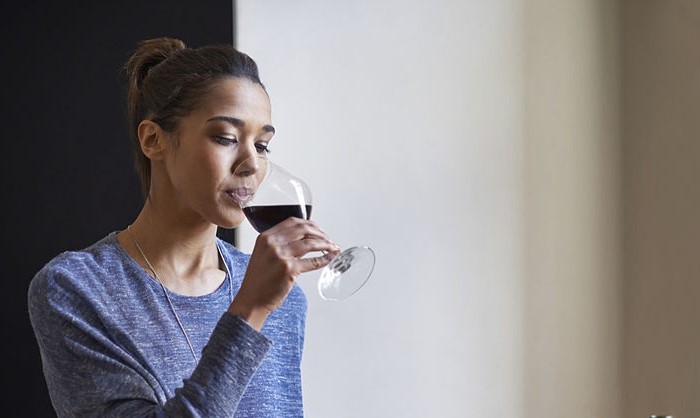Delving into the palate: a comprehensive exploration of wine tasting
Exploring the power of smell and the significance of taste in gastronomy and wine tasting

The profound complexity of taste and aroma underpins our intricate relationship with food and drink, offering us a realm of flavours to explore and indulge. While the sense of taste is thought to be more primitive than that of smell, it should be noted that the latter is ten thousand times more powerful than the former, with flavour being 80% smell.
The origin of the taste sense is entrenched in the most fundamental feeding instincts of animals. It originally served as an alert system for the first Earth's inhabitants, helping them discern safe and hazardous foods. Yet, this doesn't mean that the sense of taste, despite offering minimal information at the final stage of tasting, lacks significance. In fact, its pivotal role in gastronomy and particularly, wine tasting, cannot be overstated.
In partnership with Bodegas Torres, the European brand boasting the largest catalogue of quality wines, we will embark on an in-depth analysis of wine tasting, focusing purely on the tongue – the epicentre of gustatory perception.
The Gustatory Stage of Wine Tasting

During the gustatory stage of wine tasting, it is crucial to maintain a consistent amount of wine in the mouth—a small sip will suffice—and hold it for a similar duration each time, ranging from a few seconds to fifteen or even more. This consistency allows for accurate comparative assessment between different wines. Flavours may vary between sips if the volumes tasted and the time of retention in the mouth differ.
Taste receptors, responsive to flavourful substances, are located on the tongue, while other parts of the oral cavity are largely taste-insensitive, registering only tactile and thermal sensations.
On the surface of the tongue, taste buds - grouped into clusters called papillae - are irregularly distributed, mainly on the tip and edges, absent from the central region. Of the four types of papillae (foliate, cup-like, fungiform, and filiform), only the cup-like papillae at the back and the fungiform papillae at the front are sensitive to a specific taste. Some can detect three of the four basic tastes: bitter, sour, sweet, and salty, with others sensitive to just one. The cup-like papillae are predominantly receptive to bitter notes.
While the exact mechanism of taste perception remains unclear, it's known that taste is perceived across the tongue, with some areas demonstrating pronounced sensitivity. For instance, the sweet taste, localized at the tongue tip, is detected by a protein in the taste buds, particularly the fungiform ones, which react with sugary substances. Nerve fibres then relay the collected excitement to the brain, where the taste reception centre is located.
The specialized function of the papillae becomes evident when a small volume of wine is slowly moved across the tongue. Sweetness is perceived at the tip; sour and salty notes at the sides, beneath this area, bitterness can be sensed at the back, while the central part remains insensitive to taste.
Translating the Taste Mechanism into Wine

Stripping away aromas and focusing exclusively on taste, wine presents several basic flavours that we can categorize as follows:
- Acidic: Tartaric acid and its salts, imparting a sensation of hardness.
- Citrus: Acidic-fruit taste, offering freshness in the mouth.
- Malic: Greenness, vegetal sensation.
- Acetic: Acidic-burning taste.
- Sweet: Sugars, glycerol, alcohol.
- Salty: Organic and mineral salts.
- Bitter: Some higher alcohols and tannins, causing astringency.
However, the old adage "everyone makes mistakes" applies to the tongue as well. Some taste perceptions can mislead us. Acetic acid may create the impression of a fruity wine when it's actually a flavour that shouldn't be present; excessive acetic acid indicates a wine fault (spoiled wine). Conversely, alcohol can deceive us about a wine's sugar content. A dry Oloroso, with an alcohol content between 18-20%, may seem off-dry or slightly sweet, despite being dry.
Taste perception time relates to the ease with which substances dissolve, since a substance must be soluble in saliva to be tasted. When wine is held in the mouth, three phases are observed:
- The attack phase, lasting two to three seconds, dominated by sweet flavours.
- The evolution phase, lasting between five to twelve seconds, where the remaining three flavours—sour, salty, and bitter—emerge.
- The final impression, marked by predominant sour and bitter tones.
The duration of the lingering taste of the wine, or gustatory persistence, depends on several factors. Given the same conditions, an older wine will have greater taste persistence than a young wine. Gustatory persistence, like aromatic persistence (the duration we perceive the smell of a wine via the retronasal route), is a qualitative parameter of wine—the longer it lasts, the better the quality.
Another crucial parameter for the quality of a wine is its balance. A wine is considered balanced when the proportion between sour, bitter, sweet, and salty flavours is just right, without a piercing dominance of any one flavour. When balanced, the tasting experience is pleasurable and the wine can be described as rounded and harmonious. Should this balance be absent, the overall mouthfeel will likely be unpleasant, with an excess of acidity, bitterness, or sweetness.
Founded in 2007, Vinetur® is a registered trademark of VGSC S.L. with a long history in the wine industry.
VGSC, S.L. with VAT number B70255591 is a spanish company legally registered in the Commercial Register of the city of Santiago de Compostela, with registration number: Bulletin 181, Reference 356049 in Volume 13, Page 107, Section 6, Sheet 45028, Entry 2.
Email: [email protected]
Headquarters and offices located in Vilagarcia de Arousa, Spain.